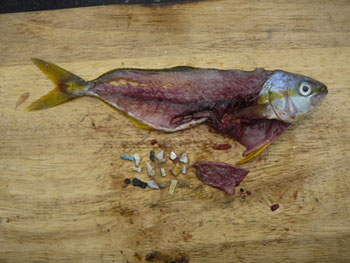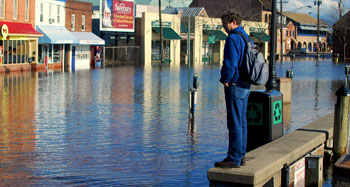The most important stories of 2015
From Pluto to gene editing, we covered these major events as they rolled out

S. Egts/SSP
Share this:
- Share via email (Opens in new window) Email
- Click to share on Facebook (Opens in new window) Facebook
- Click to share on X (Opens in new window) X
- Click to share on Pinterest (Opens in new window) Pinterest
- Click to share on Reddit (Opens in new window) Reddit
- Share to Google Classroom (Opens in new window) Google Classroom
- Click to print (Opens in new window) Print
By Janet Raloff
This year saw a steady rise in the readership of our magazine, Science News for Students. We also rolled out more stories than ever before — and on an ever-broader range of research topics. We know that you’ve noticed, and voted with your mouse clicks and phone taps as to which you found most interesting. But we editors sometimes have a different idea of what are the most important stories. Sometimes we recognize ones with the potential to prove game-changers in science and engineering. Other times, stories point to new trends or issues that are poised to affect us or our world. So sit back and review our top 10 hits for 2015. If you haven’t checked them out yet, there’s no time like the present!
10: Nano — science of the super-small
Lots of new advances these days seem to depend on features that are tiny. Very tiny. On the order of a billionth of a meter or so. At this so-called nanometer scale, certain materials can act differently than when they’re bigger. That’s why nano-things have become so interesting to the research community. This year, for instance, chemists made rewritable “paper” that is covered with light-sensitive nanoscale crystals. Light makes them change color, as if they have been covered by ink. A forest of nanowires on the surfaces of keyboard keys and nanobumps on the surface of gecko skin allows each to repel dirt, oil and liquids. Nanosilver particles can fight germs, which is why they are sometimes used to coat fabrics, medical equipment and more. But with washing, some of those particles can fall off and into the environment, where they may retain their toxic properties. Still, when targeted properly, nanoparticles can work like a medicine to stop bleeding and inflammation of internal wounds. And nanospikes can turn flexible fabrics into a new source of power, or make the surfaces of spacecraft appear ultra-black.
9: Air pollutants can slip through your skin
A new study found that certain air pollutants are small enough to enter the human body through the skin. They don’t zip through rapidly. But because skin is the largest organ, if the whole body is exposed, then even low rates of exposure can deliver what could be significant amounts of toxic chemicals. Indeed, one researcher told us, if the exposure continues long enough, skin could let in five to six times more of the pollutants than would breathing them into the lungs. Oh, and clothes can sop up some of the pollutants from a room’s air — even while hanging in a closet or on a chair. Later, wearing that clothing can serve up a now super-sized dose of the pollutants to the skin.
8: Alcohol — when teens overindulge

7: Relativity turned 100
Okay, so Albert Einstein’s theory of general relativity isn’t new. Einstein first published it a century ago this year. But a 2015 story in Science News for Students explains why relativity changed how scientists view the universe — both close to home and far away. Before Einstein came along, scientists had assumed that space always stayed the same. Time moved at a rate that never changed. And gravity pulled massive objects toward each other. General relativity would show all of those assumptions to be wrong. Read this piece to finally understand why — and what difference it makes.
6: Plastic trash ending up at sea and in food

5: Sleep more — or else!
Last year, researchers argued that kids who start school too early in the morning are tired and can turn into “zombies.” This year we learned how many U.S. teens start school too early: most of them. And how many U.S. teens sleep too little? More than half of the 15-and-older crowd do. One new feature this year linked spending too much screen time on an iPad or other electronic reader at bedtime with getting too little sleep. But there’s more reason to get plenty of sleep than just erasing drowsiness. A new study in fruit flies showed that getting enough sleep can help bring back lost memories. At least as importantly, too little sleep puts the body at risk of ignoring insulin, an important hormone. In a study with dogs, a night without sleep created conditions that looked like pre-diabetes.
4: Pay attention to those knocks on the noggin

3. Tweaking genes, and features, with molecular “scissors”
For a long time, people have been tweaking the genetics of organisms — including people. Usually, they’ve accomplished this by choosing which individuals mate. But in recent years, scientists have been able to use tools that can go into an adult organism and alter its DNA. Such genetic engineering took a new turn this year with the emergence of technologies that do gene editing. One type uses chemicals as “scissors” to cut into DNA and deliberately break a gene. In dogs, this allowed the animals to put on more muscle. A different editing technique, known as gene drives, was used to alter the DNA of mosquitoes. Treated females could not reproduce. (These bugs were targeted because they transmit malaria.) There are even plans to use gene editing on people. Because that’s controversial, a new summit of experts from around the world concluded in 2015 that no gene editing should alter cells that people could pass along to their offspring.
2. Cool pix offer details of our fave dwarf planet
Distant Pluto has always been a world of mystery. It was just a tiny speck in the night sky for much of the time people have been aware of its existence. But on July 14, after traveling for 9.5 years — across nearly 5 billion kilometers (3.1 billion miles) of space — NASA’s New Horizons spacecraft reached the dwarf planet. Almost immediately, its cameras began sending back photos of an enormous basin shaped like a heart, of ice mountains and of weirdly twirling moons. And about those five moons: Emerging data indicate that at least some may be huge pieces of debris that were flung into space after something collided with Pluto. To learn even more, visit our Hello, Pluto! landing page. It carries stories from our archive (such as those explaining why astronomers decided to take back Pluto’s planet status).
1. Dramatic updates on Earth’s developing fever

Power Words
(for more about Power Words, click here)
adolescence A transitional stage of physical and psychological development that begins at the onset of puberty, typically between the ages of 11 and 13, and ends with adulthood.
Arctic A region that falls within the Arctic Circle. The edge of that circle is defined as the northernmost point at which the sun is visible on the northern winter solstice and the southernmost point at which the midnight sun can be seen on the northern summer solstice.
astronomy The area of science that deals with celestial objects, space and the physical universe. People who work in this field are called astronomers.
basin (in geology) A low-lying area, often below sea level. It collects water, which then deposits fine silt and other sediment on its bottom. Because it collects these materials, it’s sometimes referred to as a catchment or a drainage basin.
binge To do or consume something to excess — usually an unhealthy excess.
carbon dioxide (or CO2) A colorless, odorless gas produced by all animals when the oxygen they inhale reacts with the carbon-rich foods that they’ve eaten. Carbon dioxide also is released when organic matter (including fossil fuels like oil or gas) is burned. Carbon dioxide acts as a greenhouse gas, trapping heat in Earth’s atmosphere. Plants convert carbon dioxide into oxygen during photosynthesis, the process they use to make their own food.
chemistry The field of science that deals with the composition, structure and properties of substances and how they interact with one another. Chemists use this knowledge to study unfamiliar substances, to reproduce large quantities of useful substances or to design and create new and useful substances. (about compounds) The term is used to refer to the recipe of a compound, the way it’s produced or some of its properties.
climate The weather conditions prevailing in an area in general or over a long period.
climate change Long-term, significant change in the climate of Earth. It can happen naturally or in response to human activities, including the burning of fossil fuels and clearing of forests.
concussion Temporary unconsciousness, or headache, dizziness or forgetfulness due to a severe blow to the head.
coral Marine animals that often produce a hard and stony exoskeleton and tend to live on the exoskeletons of dead corals, called reefs.
crystal A solid consisting of a symmetrical, ordered, three-dimensional arrangement of atoms or molecules. It’s the organized structure taken by most minerals. Apatite, for example, forms six-sided crystals. The mineral crystals that make up rock are usually too small to be seen with the unaided eye.
diabetes A disease where the body either makes too little of the hormone insulin (known as type 1 disease) or ignores the presence of too much insulin when it is present (known as type 2 diabetes).
DNA (short for deoxyribonucleic acid) A long, double-stranded and spiral-shaped molecule inside most living cells that carries genetic instructions. In all living things, from plants and animals to microbes, these instructions tell cells which molecules to make.
dwarf planet One of the solar system’s small celestial objects. Like a true planet, it orbits the sun. However, dwarf planets are too small to qualify as true planets. Prime examples of these objects: Pluto and Ceres.
electronics Devices that are powered by electricity but whose properties are controlled by the semiconductors or other circuitry that channel or gate the movement of electric charges.
engineering The field of research that uses math and science to solve practical problems.
fossil fuel Any fuel — such as coal, petroleum (crude oil) or natural gas — that has developed in the Earth over millions of years from the decayed remains of bacteria, plants or animals.
gecko A small to medium sized reptile found in warm to equatorial regions of the world. Some 2,000 different species of this lizard exist, in a wide range of colors. These reptiles eat insects, worms and even the occasional small bird. But they are best known for being to climb slick surfaces, owing to special structures on the bottom surfaces of their feet.
gender The attitudes, feelings, and behaviors that a given culture associates with a person’s biological sex. Behavior that is compatible with cultural expectations is referred to as being the norm. Behaviors that are incompatible with these expectations are described as non-conforming.
gene (adj. genetic) A segment of DNA that codes, or holds instructions, for producing a protein. Offspring inherit genes from their parents. Genes influence how an organism looks and behaves.
gene drive A technique for introducing new bits of DNA into genes to change their function. Unlike other such genetic engineering techniques, gene drives are self-propagating. That means they make more of themselves, becoming part of every unaltered target gene they encounter. As a result, they get passed on to more than 50 percent of an altered animal’s offspring, “driving” themselves quickly into populations.
gene editing The deliberate introduction of changes to genes by researchers.
germ Any one-celled microorganism, such as a bacterium, fungal species or virus particle. Some germs cause disease. Others can promote the health of higher-order organisms, including birds and mammals. The health effects of most germs, however, remain unknown.
global warming The gradual increase in the overall temperature of Earth’s atmosphere due to the greenhouse effect. This effect is caused by increased levels of carbon dioxide, chlorofluorocarbons and other gases in the air, many of them released by human activity.
gravity The force that attracts anything with mass, or bulk, toward any other thing with mass. The more mass that something has, the greater its gravity.
greenhouse gas A gas that contributes to the greenhouse effect by absorbing heat. Carbon dioxide is one example of a greenhouse gas.
greenhouse effect The warming of Earth’s atmosphere due to the buildup of heat-trapping gases, such as carbon dioxide and methane. Scientists refer to these pollutants as greenhouse gases. The greenhouse effect also can occur in smaller environments. For instance, when cars are left in the sun, the incoming sunlight turns to heat, becomes trapped inside and quickly can make the indoor temperature a health risk.
groundwater Water that is held underground in the soil or in pores and crevices in rock.
hormone (in zoology and medicine) A chemical produced in a gland and then carried in the bloodstream to another part of the body. Hormones control many important body activities, such as growth. Hormones act by triggering or regulating chemical reactions in the body.
hurricane A tropical cyclone that occurs in the Atlantic Ocean and has winds of 119 kilometers (74 miles) per hour or greater. When such a storm occurs in the Pacific Ocean, people refer to it as a typhoon.
Industrial Revolution A period of time around 1750 that was marked by new manufacturing processes and a switch from wood to coal and other fossil fuels as a main source of energy.
inflammation The body’s response to cellular injury and obesity; it often involves swelling, redness, heat and pain. It is also an underlying feature responsible for the development and aggravation of many diseases, especially heart disease and diabetes.
insulin A hormone produced in the pancreas (an organ that is part of the digestive system) that helps the body use glucose as fuel.
malaria A disease caused by a parasite that invades the red blood cells. The parasite is transmitted by mosquitoes, largely in tropical and subtropical regions.
moon The natural satellite of any planet.
muscle A type of tissue used to produce movement by contracting its cells, known as muscle fibers. Muscle is rich in a protein, which is why predatory species seek prey containing lots of this tissue.
nano A prefix indicating a billionth. In the metric system of measurements, it’s often used as an abbreviation to refer to objects that are a billionth of a meter long or in diameter.
planet A celestial object that orbits a star, is big enough for gravity to have squashed it into a roundish ball and it must have cleared other objects out of the way in its orbital neighborhood. To accomplish the third feat, it must be big enough to pull neighboring objects into the planet itself or to sling-shot them around the planet and off into outer space. Astronomers of the International Astronomical Union (IAU) created this three-part scientific definition of a planet in August 2006 to determine Pluto’s status. Based on that definition, IAU ruled that Pluto did not qualify. The solar system now includes eight planets: Mercury, Venus, Earth, Mars, Jupiter, Saturn, Uranus and Neptune.
plastic Any of a series of materials that are easily deformable; or synthetic materials that have been made from polymers (long strings of some building-block molecule) that tend to be lightweight, inexpensive and resistant to degradation.
Pluto A dwarf planet that is located in the Kuiper Belt, just beyond Neptune. Pluto is the tenth largest object orbiting the sun.
pollutant A substance that taints something — such as the air, water, our bodies or products. Some pollutants are chemicals, such as pesticides. Others may be radiation, including excess heat or light. Even weeds and other invasive species can be considered a type of biological pollution.
sea An ocean (or region that is part of an ocean). Unlike lakes and streams, seawater — or ocean water — is salty.
sea level The overall level of the ocean over the entire globe when all tides and other short-term changes are averaged out.
tides (adj. tidal) The alternate rising and falling of the sea, usually twice in each lunar day at a particular place, due to the attraction of the moon and sun.
toxic Poisonous or able to harm or kill cells, tissues or whole organisms. The measure of risk posed by such a poison is its toxicity.
trauma (adj. traumatic) Serious injury or damage to an individual’s body or mind.







